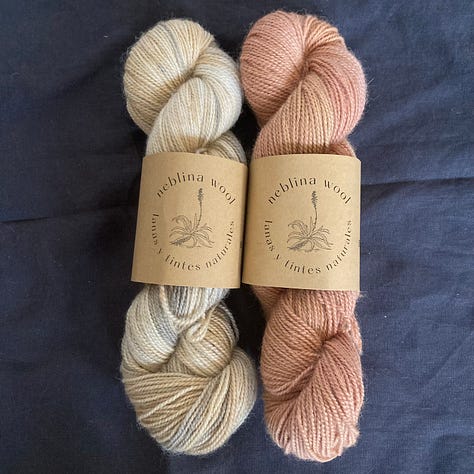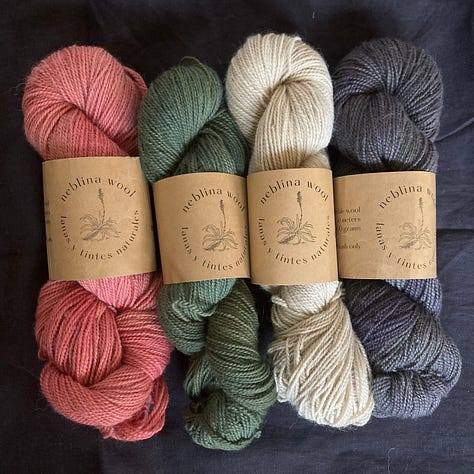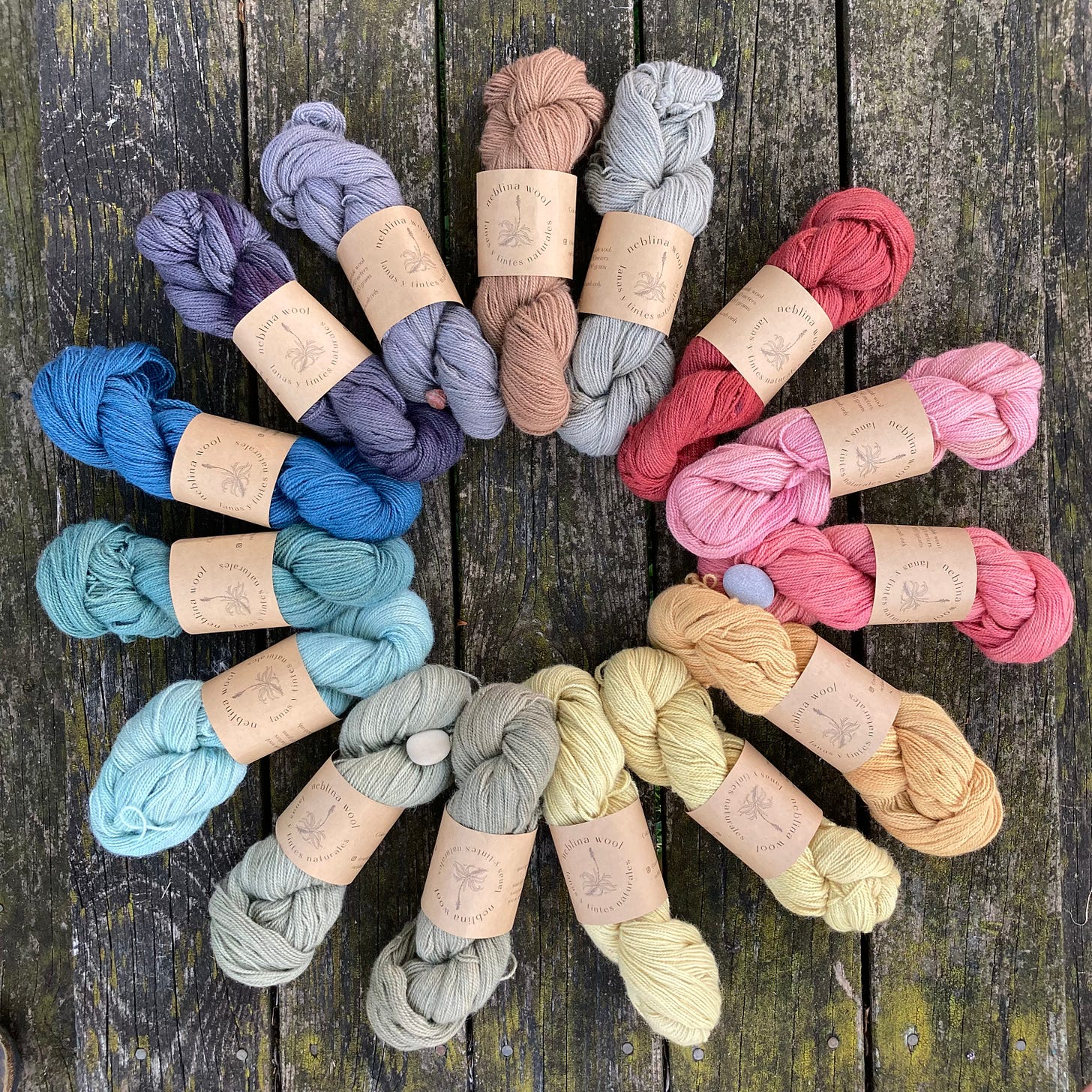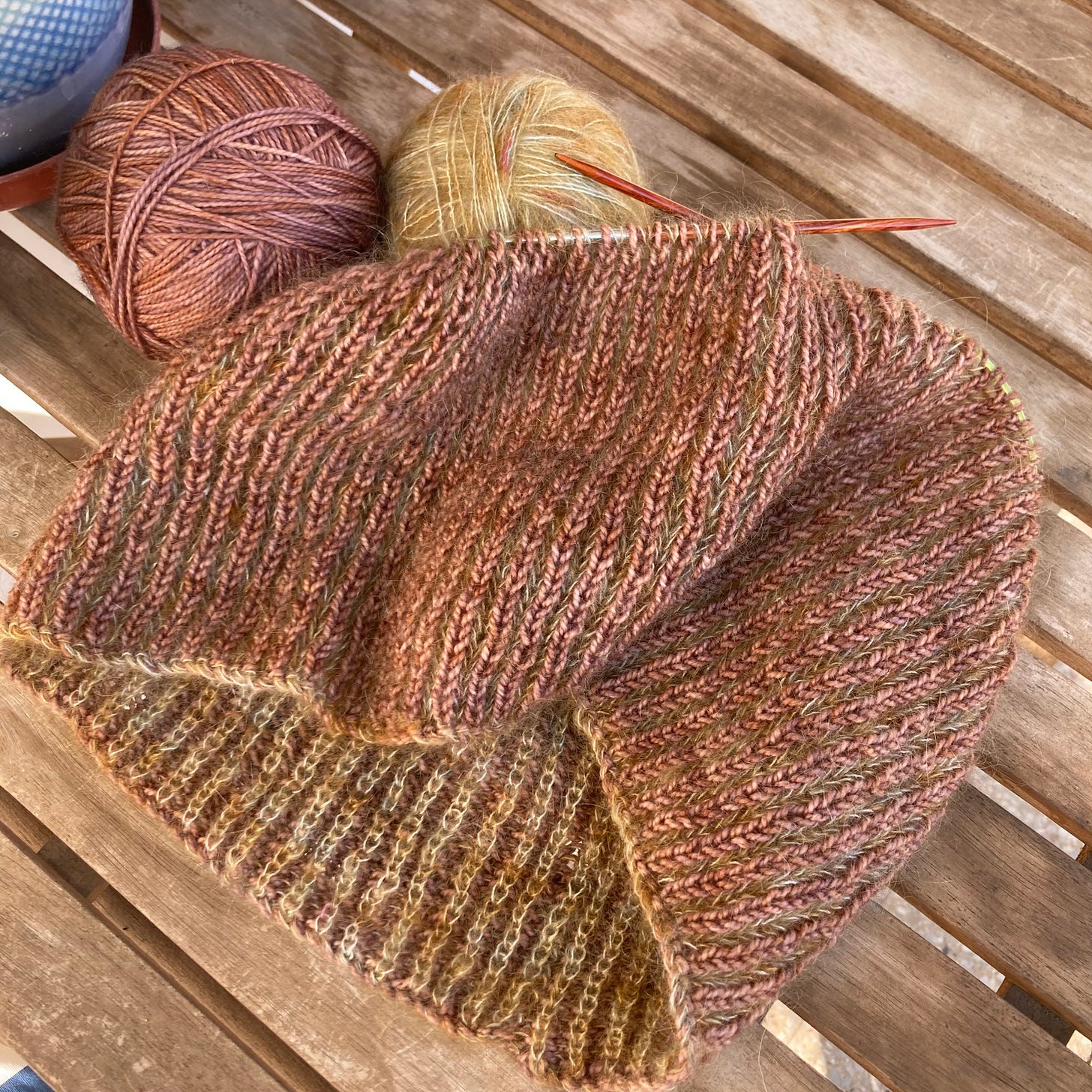Beyond Merino
This newsletter has English and Spanish versions. To choose which language you receive, visit your settings on Substack, find this newsletter under Subscriptions, and select the language(s) you want.
Leer en español aquí.
Softness or durability?
I remember first seeing this question posed in this post in Karen Templer’s blog (now dormant, but the archives are an amazing resource that greatly shaped my path in making and slow fashion). If you had to choose just one of these attributes in a yarn, which would you pick?
When I first started hanging around yarn stores and knitting with high quality, natural fiber yarns, I wanted the softest yarn I could find. I’d always thought wool was scratchy and irritating, so I was enchanted by the soft, smooth skeins of merino or alpaca wool. But as I got deeper and deeper into the knitting world and learned more about different fibers and yarns (I read a lot of Clara Parkes in addition to Karen Templer’s blog, among others), I started to appreciate the benefits of more “rustic” yarn. This might be a yarn that isn’t as soft as Merino, but will often be more hard-wearing: it will hold its shape over time and have good recovery, be more resistant to pilling, and in general have more body and texture rather than smoothness and drape.
This is, of course, a false dichotomy, as KT points out as she asks the question. There are so many factors that determine the character of a yarn: sheep breed or fiber type, crimp, staple length, how it is spun and plied, and more. And it’s definitely possible to create a yarn that combines the best of both worlds. But while softness and durability aren’t mutually exclusive categories, it does make sense to think of yarns along this continuum, because there usually is a tradeoff: the softer a yarn is, the less likely it is to resist pilling and other signs of wear. And choosing the right yarn for a project usually involves thinking about which of these characteristics to prioritize.









This is why I often get excited for non-Merino yarns, even when they’re less soft. A hardier breed will be a good choice for a sweater (my favorite thing to knit) because high-friction areas like underarms and elbows will hold up better to wear and resist pilling (although they will still pill, because all fibers pill). And I think that once you spend time with them, you realize that most garment-quality yarns are really not that scratchy, even if they’re not Merino-soft.
I started wanting to write about my Corriedale base, which doesn’t sell as well as my Merino bases despite having some truly stunning natural colors. I wanted to share what I love about it, and I also think knitters should try different breeds of sheep and consider which breeds work best for different projects. Doing this helps me to choose the right yarn for a project, which results in a finished project that will be worn for longer, which makes my knitting more sustainable.
I also think that my Corriedale takes dye really well. Maybe slightly better than Merino? I haven’t yet done the color tests to prove this, but I’m happier with the color palette I have for Corriedale. It was the base I was dyeing when I created a complete rainbow of colors for the first time last year, and I try to always have a wide palette of colors available that combine well. Currently I’m missing blue and orange and I’m excited to add them back in with plants that will become available to me in the next few months.
In the studio
After dyeing my winter collection of Bagual’s Merino Worsted as well as a new batch of speckles, I’m taking a break from dyeing until my trip to Ohio. But I still have some yarns to scour and mordant to prepare for the trip.
Aside from the scouring, winter is more of a collecting season: I try to keep my dye pots mostly empty so I can use them to collect rainwater when I have the chance, and I also take every opportunity I have to collect pomegranates, which provide such a great source of yellow.
Winter is also a knitting season. I didn’t bring any knitting the first day of the Expo Lanera and ended up super jealous of the other vendors who had projects to work on. So, in need of some easy knitting that I could do while talking to friends, colleagues and customers, I cast on these yarns I picked up from Behind the Pines last time I was in Ohio. As much as I enjoy knitting my own yarns, it’s nice to enjoy the talents of another dyer!
Upcoming events
Less than a month to go until I leave for Ohio! You can sign up for my workshops by sending me an email at neblina.wool@gmail.com. I’ll be able to accommodate last-minute signups, but having a good idea of how many people will attend before I leave for the US helps me plan how much yarn to bring.
In a similar vein, if you’re interested in vat-dyed or fresh indigo yarn, in Chile or the US, I’m also taking reservations. I can’t guarantee an exact shade because of the nature of plant dyeing, but the photos below give an idea of what colors are possible, and I can accommodate preferences for fresh or vat (a greener turquoise blue vs a true denim blue) and light or dark shades. Comment or email for more info!




As always, you can keep up with me between newsletters on Instagram and see my currently available yarn on my website. And if you enjoy this newsletter, please consider subscribing or sharing with a friend. Thanks for reading!






